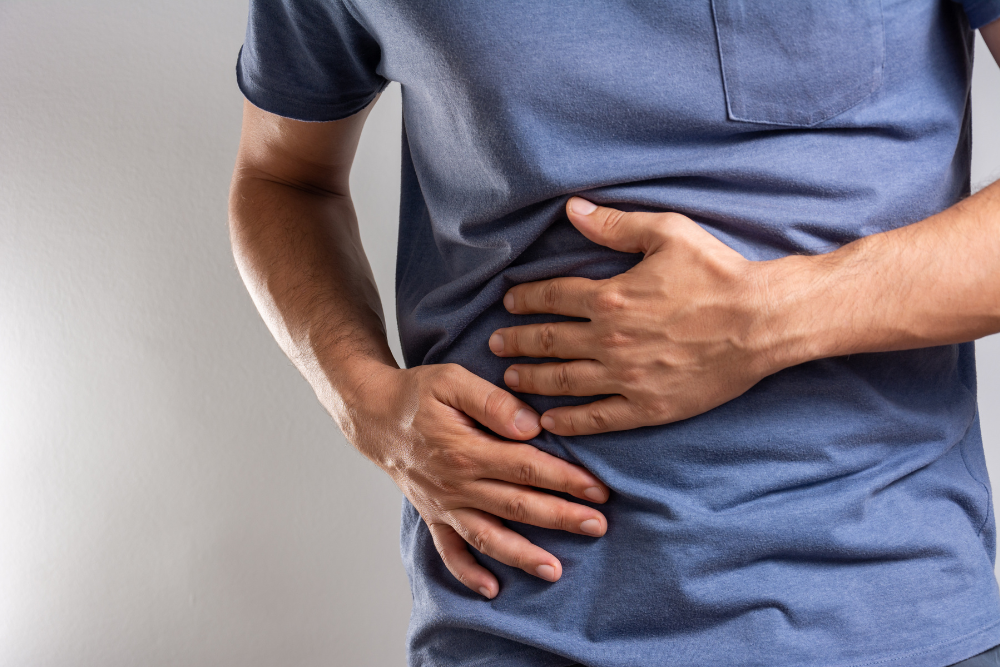Picture this: You're at your favorite Indian restaurant, mouth watering as that aromatic chicken tikka masala arrives at your table. The first few bites are pure heaven - rich, creamy, perfectly spiced. But two hours later? You're clutching your chest, reaching for antacids, and swearing off Indian food forever.
Sound familiar? You're definitely not alone. Nearly 60% of people who love spicy cuisine report regular heartburn episodes, with Indian food being one of the top triggers. The complex blend of spices, cooking methods, and ingredients that make Indian cuisine so extraordinary also create the perfect storm for acid reflux.
Here's what most people don't realize - heartburn from Indian food isn't inevitable. With the right strategies, you can enjoy every bite of your favorite curry without the burning aftermath. This comprehensive guide reveals 5 methods to prevent heartburn from spicy Indian food.
Table of contents

The Science Behind Indian Food and Heartburn
Before diving into solutions, it's crucial to understand exactly why Indian cuisine triggers heartburn more intensely than other spicy foods. The answer lies in what gastroenterologists call "compound triggering" - when multiple heartburn-causing factors combine in a single meal.
The Affect of Indian Spices
Capsaicin Overload: Indian dishes often contain multiple capsaicin sources - fresh chilies, dried red pepper, cayenne, and paprika. This compound doesn't just create heat; it actually slows gastric emptying, meaning food sits longer in your stomach, increasing acid production and reflux risk.
The Cumin-Coriander Effect: While these spices add incredible flavor, they also contain compounds that can relax the lower esophageal sphincter (LES) - the muscle that keeps stomach acid where it belongs. When this muscle weakens, acid easily travels upward.
Black Pepper's Hidden Impact: Often overlooked, black pepper contains piperine, which increases the bioavailability of other compounds. This means it amplifies the effects of other heartburn triggers in your meal.
The Affect of Traditional Cooking
Indian cuisine's traditional preparation methods, while creating incredible flavors, can exacerbate heartburn:
Tadka (Tempering): The process of heating spices in hot oil or ghee creates concentrated flavor compounds that are more likely to trigger reflux than raw spices.
Slow Cooking with Acid: Many Indian dishes simmer tomatoes, tamarind, or yogurt for hours, concentrating the acidity and creating a more potent trigger for sensitive stomachs.

High-Fat Integration: Unlike other cuisines where fat might be added as a garnish, Indian cooking integrates ghee, coconut milk, and cream directly into the dish, creating sustained LES relaxation throughout the meal.
A study published in the American Journal of Gastroenterology found that meals combining high capsaicin content, elevated fat levels, and acidic ingredients (like many Indian dishes) increased reflux episodes by 280% compared to meals with single triggers.
The Specific Culprits in Popular Indian Dishes
- Butter Chicken & Tikka Masala: These restaurant favorites combine tomato acidity (pH 4.3), heavy cream (high fat), and concentrated spices. The cream masks the heat initially, leading people to eat more than their stomach can handle.
- Vindaloo: Originally Portuguese-influenced, this dish uses vinegar as a base, creating an extremely acidic environment (pH 3.8-4.1) that directly irritates the esophageal lining.
- Biryani: While seemingly mild, the layered cooking process concentrates spices and often includes fried onions and ghee, creating a hidden heartburn trigger.
- Chole (Chickpea Curry): The combination of tomatoes, onions, and garam masala, plus the natural fiber content that slows digestion, makes this a surprising reflux trigger for many people.
- Samosas & Pakoras: These fried appetizers aren't just high in fat - they're often eaten quickly before the main meal, overwhelming the digestive system and setting the stage for reflux throughout the entire dining experience.
Understanding your personal trigger foods is key to enjoying Indian cuisine without discomfort. Take our comprehensive assessment to identify which specific dishes and ingredients cause YOUR heartburn.
5 Strategies to Enjoy Indian Food Without Heartburn
1: Master the "Spice Ladder" Technique
Don't go from mild to volcanic overnight. Your digestive system needs time to adapt to spice levels.
Week 1-2: Start with mild dishes (korma, dal, raita)
Week 3-4: Progress to medium heat (butter chicken, aloo gobi)
Week 5+: Gradually introduce spicier options (vindaloo, jalfrezi)
2: Master the Art of Intelligent Ordering
When dining out, your menu choices can make or break your heartburn prevention efforts. Here's how to navigate any Indian restaurant like a pro:
START WITH THESE HEARTBURN-FRIENDLY OPTIONS
Tandoori Dishes: Grilled meats marinated in yogurt are typically lower in oil and easier to digest than curry-based dishes. The high-heat cooking method also breaks down some of the more problematic compounds.
Dal Varieties: Lentil-based dishes are naturally alkaline and provide fiber that aids digestion. Opt for simple preparations like dal tadka over heavily spiced versions.
Coconut-Based Curries: South Indian dishes using coconut milk as a base are less acidic than tomato-based northern curries. Try dishes like coconut chicken or fish curry.
Raita and Yogurt Dishes: These provide natural probiotics and help neutralize spice. Order a side of plain raita with every meal
DISHES TO APPROACH WITH CAUTION
Creamy Tomato Curries: Butter chicken, tikka masala, and similar dishes combine multiple triggers. If you must order them, eat smaller portions and pair with plenty of rice and raita.
Vinegar-Based Dishes: Vindaloo, some pickled vegetables, and certain chutneys can be extremely acidic.
Deep-Fried Appetizers: Save samosas and pakoras for special occasions, and never eat them on an empty stomach.
Very Spicy Regional Specialties: Dishes from regions known for extreme heat (like some Andhra or Rajasthani specialties) should be approached gradually.
3: Time Your Indian Food Like a Pro
The 4-3-2 Rule:
- 4 hours before bed: Last spicy meal
- 3 hours before lying down: Stop eating completely
- 2 hours after eating: Take a gentle walk to aid digestion
This timing prevents acid from pooling when your digestion slows down for sleep.
4: Leverage Ancient Indian Digestive Wisdom
Indian culture has been dealing with spicy food for thousands of years, developing natural remedies that modern science now validates:
- Fennel Seeds (Saunf): Don't skip the small bowl of fennel seeds offered after meals at Indian restaurants. These contain anethole, a compound that reduces gastric spasms and has natural antacid properties. Chew 1/2 teaspoon slowly after eating.
- Ajwain (Carom Seeds): Less common but incredibly effective, ajwain seeds contain thymol, which stimulates gastric juices and improves digestion. Mix 1/4 teaspoon with a pinch of salt and warm water.
- Fresh Ginger: While dried ginger powder can be a heartburn trigger, fresh ginger actually helps. It contains gingerols that reduce inflammation and speed gastric emptying. Try ginger tea or chew a small piece of crystallized ginger.
- Cardamom-Infused Water: Green cardamom has been shown to reduce gastric acid secretion. Steep 2-3 crushed pods in hot water for 10 minutes and sip slowly.
- The Traditional "Paan" Concept: While betel leaf paan contains ingredients you might want to avoid, the concept of ending a meal with digestive aids is sound. Create your own version with mint leaves, fennel seeds, and a small piece of rock sugar.
- Cumin-Coriander Water: Boil equal parts cumin and coriander seeds, strain, and drink the water. This traditional remedy helps neutralize excess acid and reduces bloating.

5: Choose Your Restaurant Smartly
Green Flags:
- Made-to-order spice levels
- Tandoor and grilled options available
- Fresh yogurt-based drinks on menu
- Uses minimal oil/ghee
Red Flags:
- Pre-made curries sitting under heat lamps
- Limited mild options
- Heavy use of cream and butter
- No customization options
Key Takeaways
Indian food triggers heartburn through multiple pathways: spice, acid, and fat content
The "Spice Ladder" technique helps your digestive system adapt gradually
Strategic food pairing and timing can prevent most heartburn episodes
Traditional Indian remedies like fennel seeds and cumin water are scientifically backed
Personalized approaches work better than one-size-fits-all solutions
This article and its contents have been medically reviewed by Aditya Jain (MD at Harvard Medical School and Op-Ed Fellow at Doximity).
Can I eat spicy Indian food if I have GERD?
Yes, but with modifications. People with GERD can often enjoy Indian cuisine by choosing milder dishes, controlling portions, timing meals properly, and using the strategies outlined above. Start with low-risk options like dal, coconut-based curries, and tandoori dishes. Always consult your healthcare provider about incorporating spicy foods into your GERD management plan.
Why do I only get heartburn from Indian food and not other spicy cuisines?
Indian cuisine uniquely combines multiple heartburn triggers: complex spice blends, high-fat cooking methods (ghee, cream), acidic ingredients (tomatoes, tamarind), and specific preparation techniques. Other spicy cuisines typically rely on fewer simultaneous triggers. The slow-cooking methods used in Indian cuisine also concentrate these compounds more than quick-cooking methods used in other spicy foods.
Is it better to take antacids before or after eating Indian food?
For occasional dining, it's generally better to take antacids after symptoms appear rather than preventively. However, if you know you're sensitive and plan to eat triggering foods, taking an H2 blocker (like Pepcid) 30-60 minutes before eating can be more effective than antacids. Never rely on medication as your primary strategy - focus on the prevention methods outlined above.
Take the claisen quiz to understand what Antacid and how much is actually good for you.
How long should I wait after eating Indian food before lying down?
Wait at least 3-4 hours after eating spicy Indian food before lying down or going to bed. Indian dishes are typically higher in fat and spices, which slow digestion significantly. If you must lie down sooner, elevate your upper body with a wedge pillow and sleep on your left side










